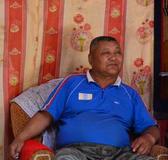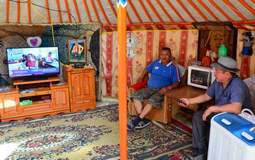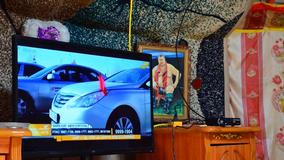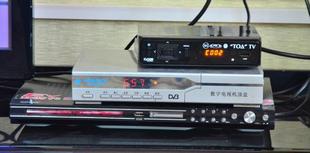60 year old Chimidbaljir Nyamjav from Mongolia wears many hats. He has worked as a teacher mentoring young mining electrical technicians. He has also worked in the country's transport industry for more than two decades.
 Apart from his working life, Nyamjav is a wrestling champion and trainer. "My love and passion for the sport in immeasurable," he says. Nyamjav lives in Nalaikh district, which is 34 kilometers south east of Mongolia's capital Ulaanbaatar. Nyamjav, is also an avid television watcher. He loves to keep abreast with what is happening in and around Mongolia and of course developments in wrestling.
Apart from his working life, Nyamjav is a wrestling champion and trainer. "My love and passion for the sport in immeasurable," he says. Nyamjav lives in Nalaikh district, which is 34 kilometers south east of Mongolia's capital Ulaanbaatar. Nyamjav, is also an avid television watcher. He loves to keep abreast with what is happening in and around Mongolia and of course developments in wrestling.
"Until very recently, watching television was sometimes not very enjoyable," says Nyamjav. "The audio was sometimes not very clear and the pictures were hazy." But since the start of 2015, Nyamjav's says his television viewing experience has been transformed. "My daughter who works in Ulaanbaatar brought me a new big television and a gadget she said was a digital set up box. The pictures are so clear it feels like the person you are watching is right there with you in the room. That not all, the number of channels I can watch is endless. I have even discovered many other sports channels which show wrestling matches."
Nyamjav's new television viewing experience is as a result of Mongolia's transition of terrestrial television broadcasting from analogue to digital.
In June 2006, an agreement was reached at the ITU Regional Radio Communication Conference (RRC-06) for countries in Europe, Africa and the Middle East to migrate their broadcasting services from analogue to all-digital terrestrial broadcast services by June 2015.
and the Middle East to migrate their broadcasting services from analogue to all-digital terrestrial broadcast services by June 2015.
The Conference observed that the digital switchover would leapfrog existing technologies to connect the unconnected in underserved and remote communities and close the digital divide. It would further increase opportunities for the provision of ICT applications and multimedia services including high quality video and interactivity.
The migration from analogue to digital broadcasting results in the release of frequency bands which can be redeployed to other users such as mobile communications and wireless broadband Internet services. This release of frequencies is known as the digital dividend.
The analogue system allowed broadcasters to transmit only one service per frequency allocation. Digital broadcasting allows several services or programmes to be broadcast in the same frequency. As such Digital TV broadcasting offers many advantages over analogue systems for end-users, operators and regulators. Apart from increasing the number of channels, digital systems can provide new innovative services, such as interactive TV with special features for persons with disabilities, electronic programme guides and mobile TV as well as transmit image and sound in high-definition (HDTV) and ultra-high definition (UHDTV).
 Digital TV also requires less energy to ensure the same coverage as for analogue while decreasing overall costs of transmission.
Digital TV also requires less energy to ensure the same coverage as for analogue while decreasing overall costs of transmission.
In Mongolia, the Government approved the national program for the transition of radio and television broadcasting to the digital technology back in 2010.
The country completed the transition in October 2015.
"The commitment shown by the Government of Mongolia to make the transition from analogue to digital broadcasting within the time frame agreed by ITU Member States, is commendable and provides vital lessons for other countries who are still in the transition process", says Mr Brahima Sanou, Director of the ITU Telecommunication Development Bureau.
He adds, "the rapid spread of ICT infrastructure and devices is accelerating global connectivity which is putting pressure on the available spectrum. The transition from analogue to digital broadcasting is expected to free up this limited resource and facilitate the faster integration of ICTs into every social and economic sector, including education, healthcare, agriculture, transportation and manufacturing."
"The spectrum capacity released by the digital transition will boost connectivity especially in the world's poorest and remotest regions, where ICTs can arguably make the biggest difference, and help bring people everywhere out of extreme poverty", observes Mr Sanou.
The latest ITU report on Measuring the Information Society indicates that 3.2 billion or 43.4 per cent of the global population is now online. Although there are over 7.1 billion mobile subscriptions worldwide, an estimated 350 million people live in places which are still out of reach of a mobile network.
"The completion of the transition to digital broadcasting in Mongolia will transform the way viewers in the country watch and interact with TV and opens the way for new innovations and developments in the broadcast industry, " says Mr François Rancy, Director of the ITU Radiocommunication Bureau.
The migration from analogue to digital terrestrial broadcasting is also being examined by the ITU-D Study Group 1 under Question 8/1. During the second meeting of the ITU-D Study Group 1 for the 2014-2017 study period held in Geneva from 14 to 18 September 2015, studies under the Question focused on the examination of strategies and methods of the migration and implementation of new services.
also being examined by the ITU-D Study Group 1 under Question 8/1. During the second meeting of the ITU-D Study Group 1 for the 2014-2017 study period held in Geneva from 14 to 18 September 2015, studies under the Question focused on the examination of strategies and methods of the migration and implementation of new services.
The Study Group also examined the issue of spectrum re-planning, the utilization of the digital dividend resulting from the spectrum freed by the transition process, marketing strategies to accelerate public awareness about digital migration and the financial support granted to low income groups to enable them acquire the necessary resources for the reception of digital broadcasting signals.
"The transition from analogue to digital broadcasting presents developing countries with immense opportunities to scale up innovation in the ICT sector and help provide new and affordable services and products for people everywhere," says Mr Fabrice Djoumessi Dontsa, ITU-D Study Group 1 Question 8/1 Vice Rapporteur.
He adds, "the ITU-D Study Groups offers an excellent platform for ITU Members to share experiences and best practices that would help these countries prepare a road map for a smooth transition."
At the 2014 World Telecommunication Development Conference held in Dubai, ITU Member States resolved that the transition from analogue to digital broadcasting is a critical issue for policy-makers, regulators, operators, broadcasters and other parties.
The Conference stated that the objective of the Telecommunication Development Bureau (BDT) in this area is to enable developing countries to achieve smooth migration from analogue to digital broadcasting including terrestrial TV, mobile TV and sound broadcasting, and follow with the countries the post-transition activities like e.g. introducing new broadcasting services, allocation of the digital dividend. BDT was also mandated to provide assistance on policy and regulatory frameworks for digital broadcasting and organize regional meetings for ITU Members on the use of spectrum for broadcasting or other services.
Back in Nalaikh district, Mr Nyamjav is proud of his new digital television viewing experience and is more than happy to have friends come to his house in the evening or on weekends to relax and enjoy watching television.
"I have more than six channels from which to choose from," says Nyamjav. "I am particularly fond of news channels as well as those which show our Mongolian culture. I am looking forward to watching this year's Naadam festival live on my digital television. The festival features wrestling, horse racing and archery. With digital broadcasting I believe the images from the festival will be awesome," he adds.
For more details on the status of the transition to digital terrestrial television broadcasting click here.
ITU-D Study Groups provide an opportunity for all Member States and Sector Members, Associates and Academia, to share experiences, present ideas, exchange views, and achieve consensus on appropriate strategies to address ICT priorities. They are responsible for developing reports, guidelines, and recommendations based on input received from the Membership. Information is gathered through surveys, contributions and case studies.
